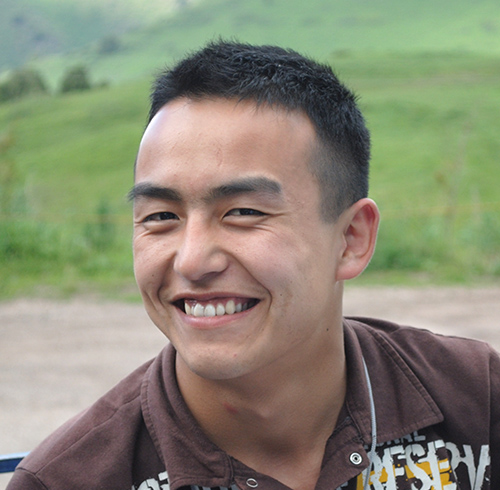Aibek Samakov
About
 I was born and grew up in Ysysk-Köl province of Kyrgyzstan. The province was named after the big lake that is located in that area. Ysyk means hot, köl stands for lake. Issyk-Kul is the world’s second-largest high-altitude lake and a major biological and economic resource of the country.My education background in International Relations and my work in Aigine Cultural Research Center, which focuses on a research of sacred sites in Kyrgyzstan, shaped my interest in environmental issues. The former helped me to understand that, in order to solve some environmental issues, a cooperation between nations, states, transnational organizations and other actors is needed. The latter forged my understanding of local communities’ important role in environmental protection and conservation.
I was born and grew up in Ysysk-Köl province of Kyrgyzstan. The province was named after the big lake that is located in that area. Ysyk means hot, köl stands for lake. Issyk-Kul is the world’s second-largest high-altitude lake and a major biological and economic resource of the country.My education background in International Relations and my work in Aigine Cultural Research Center, which focuses on a research of sacred sites in Kyrgyzstan, shaped my interest in environmental issues. The former helped me to understand that, in order to solve some environmental issues, a cooperation between nations, states, transnational organizations and other actors is needed. The latter forged my understanding of local communities’ important role in environmental protection and conservation.
Being a part of Aigine CRC’s research team, I got exposed to some cases that show efficiency of Community based Conservation. For instance, I met with members of various communities that managed to preserve high level of biodiversity on local sacred sites. Sacred sites can be defined as “areas of dry land and bodies of water, as well as constructions and items, which are spiritually or/and religiously meaningful for local people and where sacral practices are performed (Aigine CRC, 2013: Sacred Sites of the Southern Kyrgyzstan: Nature, Manas, Islam). Since almost in every community, village or town in Kyrgyzstan, there are some sacred sites and they can serve as “biodiversity hotspots”, I believe that sacred sites can become a basis for efficient Community based Conservation in Kyrgyzstan.
Place
My study site is the Ysyk-Köl Biosphere Reserve, whcih encompasses some of the oldest formally protected areas in Kyrgyzstan (established as early as 1948) and more than 120 sacred sites. Ysyk-Köl Lake is a keystone element of the Reserve and is the largest high-altitute lake in Central Asia. With 668 km long coastline, Ysyk-Köl Lake fits well into CCRN study site criteria. The Ysyk-Köl Biosphere Reserve covers the total area of 43.1thousand square kilometers and is a designated UNESCO Biosphere Reserve and a Ramsar site.
Research
My research is looking at governance, biocultural conservation and stewardship in Ysyk-Köl Biosphere Reserve. The main question guiding the research is how sacred sites might fit into formal conservation strategies in Ysyk-Köl region. Within CCRN, I became a part of the Governance subgroup. The field study is to be conducted from June till November 2014.


